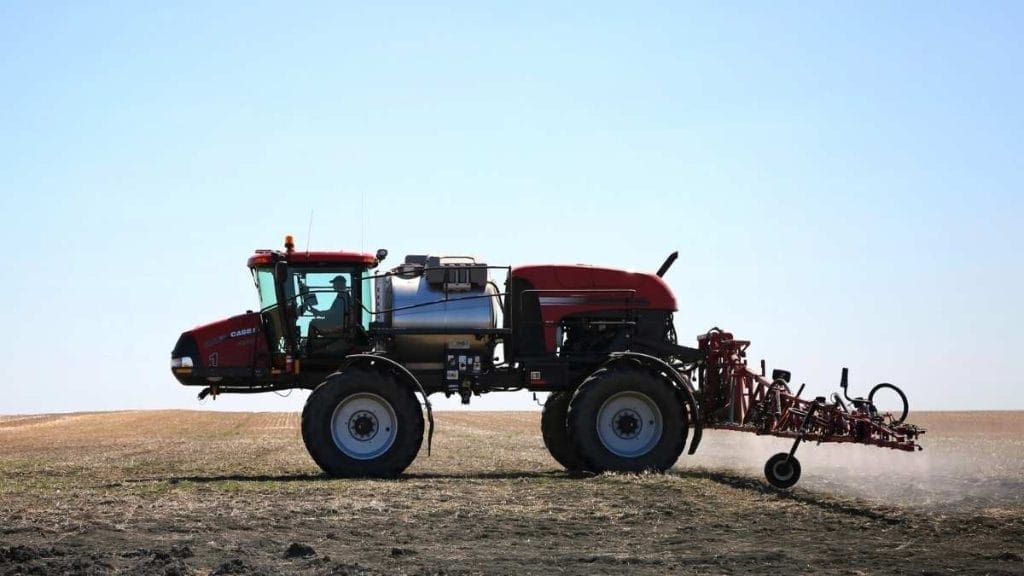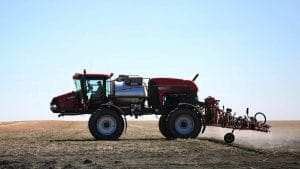Glyphosate is a widely used herbicide that controls broadleaf weeds and grasses. First registered in 1974 by the Monsanto Company (now Bayer) and marketed under the name Roundup, it has become a cornerstone of Canadian agriculture—especially for key crops like canola, soybeans, field corn, and wheat. However, the debate surrounding glyphosate isn’t solely about its effectiveness or safety. Public concern and fear—often fueled by misinformation—have made it a highly controversial topic. This article aims to shed light on the controversies and illustrate why glyphosate’s agricultural benefits remain significant.

What Is Glyphosate?
Glyphosate belongs to Group 9 herbicides, meaning it targets and blocks the EPSPS enzyme pathway in plants—a critical biochemical process for producing amino acids essential for growth and survival. By interrupting this pathway, glyphosate stops protein production and effectively halts plant growth. As a non-selective herbicide, when applied to a plant’s foliage, it is absorbed and begins to disrupt the EPSP synthase, which reduces the production of the essential amino acid and protein synthesis of the plant. This is why, when used, it must be timed properly to ensure that the weeds are being targetted and not the crop (unless it is glyphosate-resistant), otherwise, you will also damage your crop.
Glyphosate-based products often include surfactants that help the active ingredient penetrate the plant leaves more effectively. Once inside the plant, glyphosate travels to the growing parts—such as shoots and roots—disrupting essential tissue development and preventing regrowth. Typically, it takes two to three weeks for the herbicide to fully kill the targeted plants.
The advent of glyphosate-resistant crops in the 1990s transformed agriculture and turf care. These genetically modified, or Roundup Ready, crops withstand glyphosate applications while surrounding weeds do not. This early weed control reduces competition and supports sustainable farming practices by cutting down on tillage and lowering carbon emissions.
Who Regulates Glyphosate in Canada?
In Canada, agricultural pesticides are regulated by Health Canada’s Pest Management Regulatory Agency (PMRA). Since 1995, the PMRA has enforced rigorous safety standards by conducting thorough scientific evaluations to assess risks to human health and the environment. Evaluations include toxicity, exposure levels, and environmental persistence, with all registered pesticides re-examined on a 15-year cycle to ensure they meet modern criteria.
Following an extensive review, the PMRA concluded in 2015 that glyphosate poses no significant risk to human health or the environment when used as directed. The agency determined that glyphosate does not exhibit genotoxic properties and is unlikely to be carcinogenic at the exposure levels encountered in typical applications.
In Canada, glyphosate is not registered or approved as a desiccant (a chemical used to dry out crops or ripen seeds), unlike in some other countries, where this may be the case. In Canada, its approved uses include pre-emergence weed control for annual weeds and patch treatments for perennial weeds in cereals, corn, soybeans, and forage crops, as well as applications on glyphosate-tolerant crops. To learn more about the proper timing and techniques for glyphosate use, consult a resource such as Saskatchewan’s Guide to Crop Protection.

The Controversy Surrounding Glyphosate
Glyphosate received widespread criticism in 2015 after the World Health Organization’s International Agency for Research on Cancer (IARC) classified it as “possibly carcinogenic” (Group 2A). This controversy, however, was not new. For years, environmental organizations have petitioned for a glyphosate ban, citing potential health risks and environmental impacts based on preliminary or speculative science.
Although public apprehension is understandable, regulatory decisions must be driven by robust scientific evidence rather than precautionary measures. In Canada, the PMRA and other international agencies have repeatedly reviewed glyphosate and found no conclusive evidence to support the claims of significant health risks. Agencies such as the European Food Safety Authority (EFSA) and the Australian Pesticides and Veterinary Medicines Authority have also maintained that glyphosate is not carcinogenic, rejecting the IARC’s classification. Supporting this view, the European Commission granted glyphosate a 10-year extension for its use in 2023.
That said, no substance is entirely without risk. Regulatory agencies recognize that while glyphosate is deemed safe when used responsibly, overuse can lead to issues like the development of herbicide-resistant weeds. For example, in Saskatchewan, a producer can treat an annual weed such as Kochia with up to 325 g ae/acre before the crop emerges, while glyphosate-tolerant canola can receive a single 120 g ae/acre application at any growth stage. These guidelines are designed to minimize risks and prolong the efficacy of glyphosate in agricultural practices.
Final Thoughts
Glyphosate remains an essential tool in Canadian agriculture, replacing older, less efficient herbicides and significantly aiding in weed management. Although controversy persists, much of the skepticism arises from misinformation rather than a balanced review of the scientific data.
Interestingly, similar skepticism surfaced during the COVID-19 pandemic regarding vaccines—another case where rapid regulatory endorsement led many to wonder if approvals were “rubberstamped.” However, both agricultural and medical policies undergo extensive scrutiny to ensure safety and efficacy, a topic that deserves further discussion and understanding.
Find more articles about science, sustainability, and innovations in food and agriculture from Savannah and colleagues at the SAIFood Blog.



 Puffed Wheat Cake
Puffed Wheat Cake